Scarsdale Says Goodbye to Village Manager Steve Pappalardo After 33 Years of Service
- Details
- Written by: Sammy Silberberg
- Hits: 2514
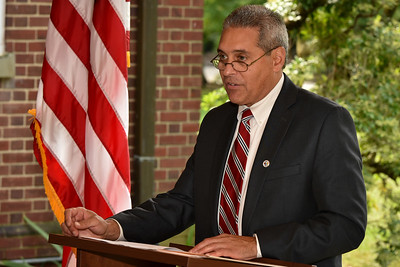 The Scarsdale Board of Trustees bid a bittersweet farewell to longtime Village Manager Steve Pappalardo, who has tirelessly served our local government for 33 years at their June 22, 2021 meeting which marked Pappalardo’s last meeting.
The Scarsdale Board of Trustees bid a bittersweet farewell to longtime Village Manager Steve Pappalardo, who has tirelessly served our local government for 33 years at their June 22, 2021 meeting which marked Pappalardo’s last meeting.
During Mayor’s Comments, Mayor Veron had many wonderful things to say about Pappalardo’s dedication, work ethic, and love for the village. Below is an excerpt of her words:
“Steve, over the past 33 years, you have given every bit of your heart and soul to Scarsdale. There is no part of Scarsdale Village operations you haven’t touched, and with your care, made that much better. You have risen through Scarsdale Village government to the pinnacle, serving as our Village Manager for these past six years. Throughout you have never missed a beat, working day and night to ensure that our residents and your staff are well cared for. Your work ethic is beyond compare, and you dive into the details to make everything right. From the very beginning of your tenure, no issue is too big nor too small for you to address. With sincerity and concern, you listen, support, and work to make things better. You are the true embodiment of public service.”
Trustee Crandall followed and said she was “at a loss for words. [Steve has] been in Village Hall for the entirety of my volunteer career, close to 20 years… his work ethic is beyond compare. He works weekends, if there is any type of emergency, he is on it. He instructed our police chief to call him in the middle of the night if there is ever anything unusual… I thank you for all your hard work, your dedication, your service.” Trustee Arest praised Pappalardo as a “dedicated and loyal public servant… a steadfast leader in times of crisis, a friend and mentor to many, and an invaluable source of knowledge.”
Next up was Trustee Whitestone who commented that his deep appreciation for Pappalardo’s work was “never more evident than during the last 15 months of unforeseen and unimaginable stress on the village… Steve maintained his firm stewardship of operations, the facts, and the finances which had to change on the fly, displaying throughout his signature calm and reasonable professionalism.” He added that, “for Steve, this was not a five day a week job… he was always on the job. Ready to be present in the best sense of those words… I thank his family for letting us have so much of Steve’s time.” s
Trustee Lewis concluded the Board farewells and thanked Pappalardo “for the high standards you set for hard work, your dedication to our community, your humor, and most importantly for making our community a better place.” Several residents, including Deb Pekareck, Max Grudin, Bob Harrison, and Michael Levine, also joined the meeting to recognize and thank Pappalardo for his work over the years.
Pappalardo thanked the Board for their kind words. Below is an excerpt from his parting words:
“Scarsdale has been a big part of my life… I only know one way to do this job, and you have to be all in. The job is not easy but it’s so rewarding… by my calculations, after 33 years and 4 months… this will be my 800th regularly scheduled village board meeting, and I’m fixing to make it the best… Scarsdale is a special community… the residents, the heartbeat of this place, the caring about their village. It’s an incredible place, people give so much of themselves and their time, and they are engaged and thoughtful on all important government matters. You couldn’t help as a public official but to meet that, and to work as hard as they were working… I’ve always expected the best from our professional staff because of the standard you’ve set as volunteers… Thank you again for the opportunity to enjoy a fulfilling career in local government and public service.”
Trustees Agree to Sell More Non-Resident Pool Passes to Narrow the Deficit
- Details
- Written by: Sammy Silberberg
- Hits: 3018
 From the kiddie pool to the high dive to the snack bar, the Scarsdale Pool has always been a cherished facility in the village. In recent years however, the pool’s membership has dramatically declined, and its aging infrastructure has become increasingly expensive to maintain and repair.
From the kiddie pool to the high dive to the snack bar, the Scarsdale Pool has always been a cherished facility in the village. In recent years however, the pool’s membership has dramatically declined, and its aging infrastructure has become increasingly expensive to maintain and repair.
During a recent Work Session, the Board of Trustees debated the best way to increase membership and close the pool’s financial deficit. Working with village staff, the Board drafted a Request for Proposal (RFP) so companies can bid on the project and make necessary improvements to the facility.
As of June 15, 2021, the pool sold 920 family resident passes, 97 family nonresident passes, and 113 individual passes. In total, all passes sold have accrued $755,042 in revenue, which is a distinctly lower number than in previous years. In 2011, the pool sold 1,766 family resident passes and this figure has steadily declined every year since. Given this year’s figure, the village estimates a deficit of $117,958.
To address the deficit, the Board debated issuing an additional 50 nonresident passes to supplement the dip in resident sales. Sales at this point in the summer are often strongly affected by weather; several weeks ago, during the 90-degree heatwave, 384 permits were sold in just six days. While Scarsdale residents may continue to buy passes, the Board was hopeful that the strong demand for nonresident permits will close the deficit gap.
Trustee Whitestone, skeptical about issues of overcrowding, asked Village staff if they could present yearly attendance or percent capacity rates on peak days. He wanted to investigate further how an additional 50 passes would affect these figures. Superintendent Gray said that could find these numbers, but they will likely be inaccurate because typically only one family member will swipe their pass. Trustee Ahuja added that he does not think a little more data will change the debate at this point, and because time is of the essence, they should decide with the figures they have now.
Trustee Arest was also concerned with overcrowding, primarily because even if the pool is not nearing peak capacity, visitors tend to gather in the same areas, which intensifies the perception of a crowded facility. Superintendent Gray commented that the pool does start to feel crowded when it hits 1,300 attendees because they gravitate towards the most popular seating areas.
Mayor Veron added that kids leave for camp at the end of June, which could be an optimal time to open more pass sales. Trustee Whitestone emphasized the July 4th is a key marker, and it is important that the Board reach a consensus soon to capitalize on these holiday sales. Trustee Crandall agreed and said “the time is now” because if the Board waits too long, they cannot justify selling passes at full price.
Trustee Crandall declared that she would be in favor of selling an additional 50 nonresident passes, and Trustee Lewis agreed. He acknowledged that overcrowding is a potential issue, but said that the “numbers speak for themselves,” and that the pool is not nearly at peak capacity with the number of permits sold this year. He noted that the Village must sell 200 resident family passes at $600 each to close the deficit and proposed a “simple and straightforward” plan that “keeps our eyes on the prize”: Lewis suggesting that the Village adopt an aggressive marketing campaign to sell as many residents permits as possible in June. Then, starting in July, the Board could authorize as many nonresident family passes as it would take to bridge the financial gap. Trustee Lewis also added that if Scarsdale finds interested nonresidents, and given the context of this past year, “we should be welcoming to everyone.”
In response to this proposal, Mayor Veron and others agreed that Scarsdale should adopt a robust marketing campaign for the remainder of June. Trustee Brew, in response to Trustee Lewis’ proposal, was worried that selling more passes could have ripple effects in the following years. She asked what the Village would do if they had to revoke nonresident pass sales in the future, and how that change will impact public sentiment towards Scarsdale. Trustee Whitestone added that if people have the perception that the pool is crowded this summer, it could drive resident sales down in subsequent years.
Mayor Veron acknowledged that it is important not to let short-term revenue gain outweigh long-term impacts. She also pushed back on Trustee Lewis’ feelings towards overcrowding by saying that the data doesn’t show what residents see as the value proposition in their pass; is the value in being able to swim every weekday, or is the value in getting a prime spot next to the kiddie pool on a Saturday? While the pool is not close to peak capacity, Mayor Veron was wary that some residents may see less value in their pass if they cannot find space in the popular seating areas during peak hours.
Two residents provided the Board with their perspectives. John Schwarz asked the Village to consider the implications on parking capacity in addition to poolside crowding with new nonresident passes. He also suggested that the pool may be losing revenue because people have an increased desire to join clubs with multiple offerings. He recommended that during the renovations, staff consider making a joint pass with Crossway tennis courts. Finally, Mr. Schwarz suggested that the Board offer nonresidents pass holders the right of first refusal next year to preserve goodwill.
Resident Bob Harrison chastised the board, saying, “you’ve discussed this too much, it’s simple… you’ve wasted a lot of time… don’t worry about next year. Let’s worry about today, let’s close the gap.” He stated that his family has been pool members for 40 years, and they go to the pool every weekend in the summer. Mr. Harrison said that he spoke with pool staff last summer who reported that the facility never had more than 1,100 attendees at once. He went on to say that over the years, the pool has reached 2,600 memberships, and yet there were no overcrowding issues even then. He urged the Board to sell more passes and move on to other matters.
Suggesting a compromise to Trustee Lewis’ proposal, Mayor Veron proposed selling 25 nonresident family permits starting July 1 and another 25 individual passes. The trustees all agreed to the mayor’s suggestion, and she authorized Village staff to sell these passes. The trustees also agreed to revisit the topic at the next meeting, evaluate how quickly the passes sold, and potentially authorize additional sales. Also, while nonresident senior citizens originally could purchase passes with the standard 50% discount, the Board agreed that going forward these passes will be sold at full price.
Local resident Bob Harrison sent in the following letter concerning pool memberships:
Harken ! Scarsdale residents, young and old, our beautiful '" GEM " of our outdoor pool complex needs you to join with your pool membership of choice NOW. The Rec Dept has an excellent choice of various memberships to meet our resident needs.
The pool complex has over seven beautiful acres of grass with 4 pools for all. The grounds are NOT overcrowded !!! Ten years ago the pool had over 2,600 +members. Today the membership is around 1,500. with an operating deficit.
We need 100+ new memberships or old members to rejoin the pool now.
We need Scarsdale residents to support our pool complex with some form of membership. The pool is a beautiful facility to support and preserve for our Scarsdale community.
You can register with the Rec Dept by phone at 722-1160 or online at www.scarsdale.com .
Contact Bob Harrison at 914 646-4054 cell phone or by email at proscars@aol.com to discuss the outdoor pool and the opportunity for various memberships including seniors .
Bob Harrison, Chairman
Scarsdale Taxpayer Alert
Scarsdale Boys Golf Team Wins Section Championship
- Details
- Written by: Jack Margolin
- Hits: 2840
 Team celebrates Section 1 Championship: From left to right: Steven Lee, Aaron Zoland and Charlie Berridge. For the sixth time in the past seven years, Scarsdale has won the Section 1 team golf championship at Fenway Golf Club.
Team celebrates Section 1 Championship: From left to right: Steven Lee, Aaron Zoland and Charlie Berridge. For the sixth time in the past seven years, Scarsdale has won the Section 1 team golf championship at Fenway Golf Club.
Scarsdale now finishes the season not only with a section championship, but also an undefeated record of 16-0, including 6-0 in league matches. The team had plenty of tough matches this season, including a tie-breaker win vs. Bronxville.
Scarsdale finished the day with a score of 190, beating John Jay, who finished 10 shots behind with 200.
Seniors Charlie Berridge and Steven Lee, who have committed to play golf at the University of California, Berkley and University of Pennsylvania, respectively, led the way for Scarsdale’s victory. Berridge shot a team best 32; Lee was just behind him with a score of 36.
“Despite the unfortunate circumstances with Covid, we still pulled together a great season,” stated Lee.
“It was a fun season and I’m looking forward to running it back next year,” said first time varsity athlete Jack Spitalny.
“It was a great season,” added Matt Silver, also a first time varsity athlete. “We went undefeated en route to a section title. There’s not much more you could ask for.”
Scarsdale enjoyed a dominant 2021 season and looks to continue its success in 2022 and beyond.
2021Team Members:
Charlie Berridge
Steven Lee
Archie Fanning
Brian Nicholas
Justin Liu
Sajiv Mehta
Matthew Steuerman
Charlie Schulhof
Leo Rosenstadt
Ethan Hersch
Jack Spitalny
Matt Silver
Ryan Gerson
COVID on the Decline But Masks Still Required Indoors
- Details
- Written by: Joanne Wallenstein
- Hits: 1719
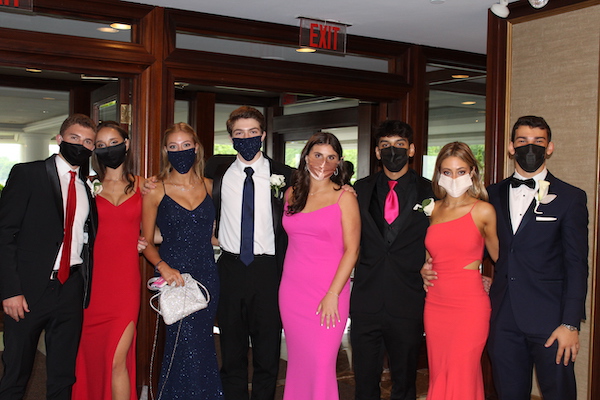 Prom goers were required to wear masks.County Executive George Latimer continued to track the virus and vaccination statistics at his briefing on Monday June 9, where he reported only 328 active cases in Westchester, down from 11,500 in January. 30 remain hospitalized and there were two COVID deaths in the past week. Of the 3,000 COVID tests administered this week, only 19 were positive, which is less than half of one percent.
Prom goers were required to wear masks.County Executive George Latimer continued to track the virus and vaccination statistics at his briefing on Monday June 9, where he reported only 328 active cases in Westchester, down from 11,500 in January. 30 remain hospitalized and there were two COVID deaths in the past week. Of the 3,000 COVID tests administered this week, only 19 were positive, which is less than half of one percent.
On the vaccine front, 421,000 vaccines have been administered in the county. 53% of all Westchester residents are fully vaccinated and 61% of residents have received at least one dose. Teens ages 12-16 who are eligible are getting the vaccines.
Appointments are no longer required to get vaccinated at the County Center. If you want to walk-in to the county center, those without an appointment will get the one dose Johnson and Johnson vaccine and those with an appointment will get the Pfizer vaccine.
As the COVID crisis is on the decline, Latimer changed his briefing schedule to once, rather than twice per week.
Masks
Latimer emphasized that the county government does not make the school mask policy. These decisions are made by the state of New York. However the county does implements state policy and local recreation programs follow the school policies.
Currently, for village and municipal recreation programs, you can be unmasked when playing the sport. When you are not playing or watching from the sidelines, vaccinated people do not need a mask, while those who are not vaccinated are required to wear a mask.
Also this week, Scarsdale Schools Superintendent Thomas Hagerman announced that masks no longer need to be worn outside on school property but do need to be worn inside. On Monday June 7 he wrote, “Starting tomorrow, students will no longer be required to wear masks outside. Students who would like to continue to use masks while outdoors are encouraged to do so. In the coming days, we will clarify our requirements for mask-wearing at sporting events and end-of-year ceremonies after consultation with our District Physician and the Department of Health. Masks must continue to be worn on busses.”
Scarsdale Foundation Awards Volunteers Honor Roll
- Details
- Hits: 2777
In the absence of the annual Scarsdale Bowl dinner for the last two years due to the pandemic, Scarsdale Foundation has had to pivot in their fundraising efforts to raise money for scholarships. Without their biggest fundraising event and to recognize those who went above and beyond in the community, the foundation created the Volunteer Honor Roll.
The Scarsdale Foundation’s 2021 Volunteer Honor Roll is raising money for college scholarships for Scarsdale students that are in financial need for their sophomore, junior and senior years. So far, they have honored over 726 volunteers in our community and raised over $22,000. They hope to achieve their goal of $50,000 and 2021 honorees by the deadline on June 20th.
To honor someone who has made difference use this link and for $25/Honoree, you can make someone’s day. Your donation is tax deductible.
Some of the volunteers that the Scarsdale Foundation has honored so far this year include: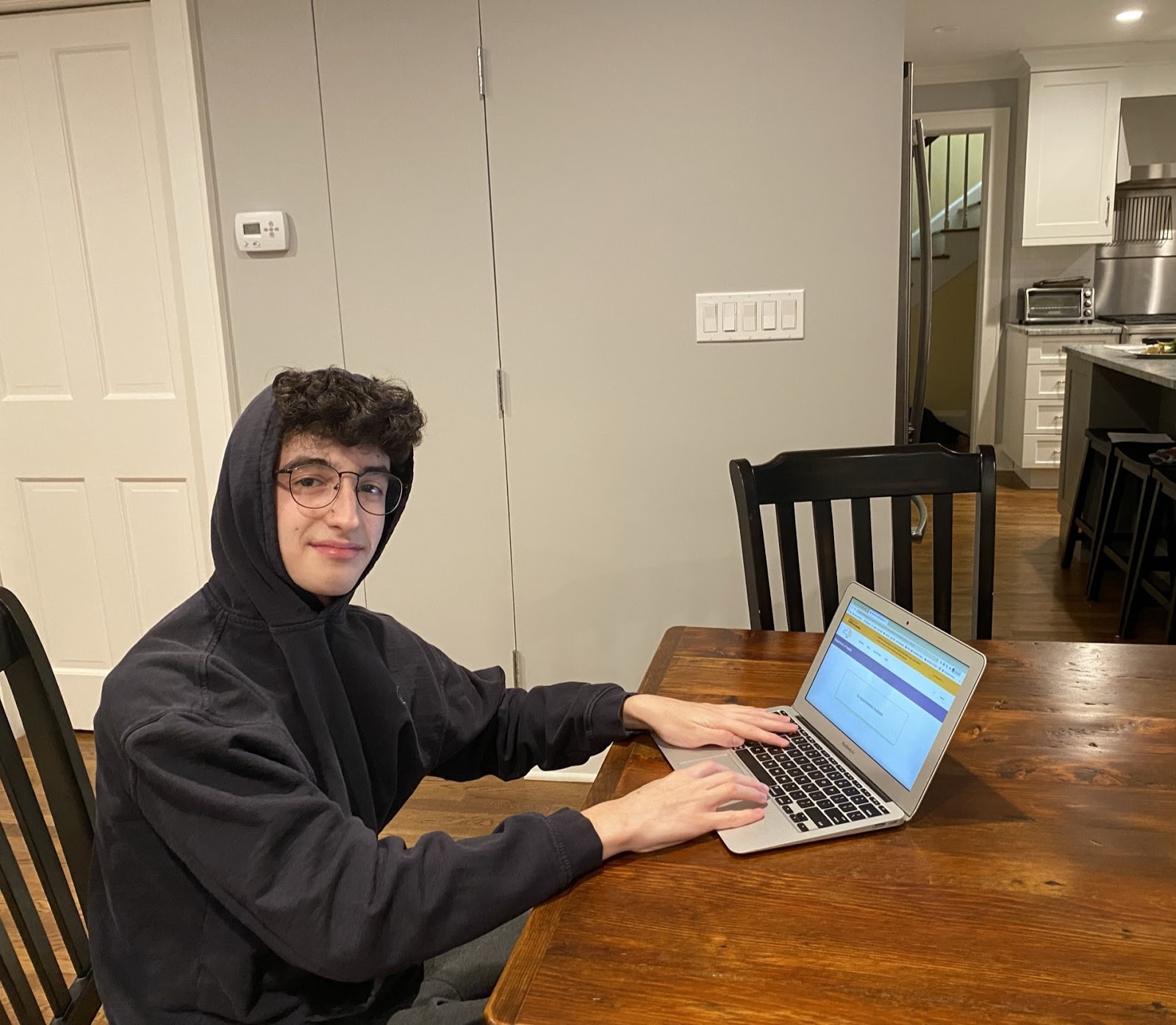 Daniel Rublin, a sophomore at Scarsdale High School, booked over 150 vaccine appointments for people all over New York State. He also created a Google Form for people who wanted to request assistance with booking an appointment.
Daniel Rublin, a sophomore at Scarsdale High School, booked over 150 vaccine appointments for people all over New York State. He also created a Google Form for people who wanted to request assistance with booking an appointment.
Natalie Hu & Alexandra Simon, both sophomores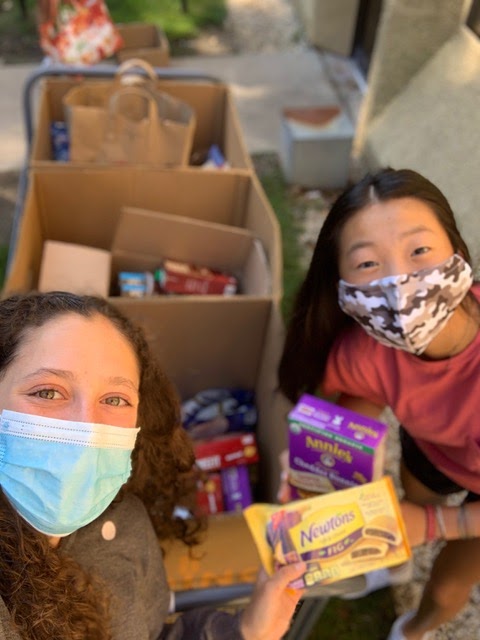 at Scarsdale High School, collected over 250 canned foods from all over Westchester and delivered them to Feeding Westchester. "It was a great experience as we were able to help people in our own community while spreading awareness about Operation Smile."
at Scarsdale High School, collected over 250 canned foods from all over Westchester and delivered them to Feeding Westchester. "It was a great experience as we were able to help people in our own community while spreading awareness about Operation Smile."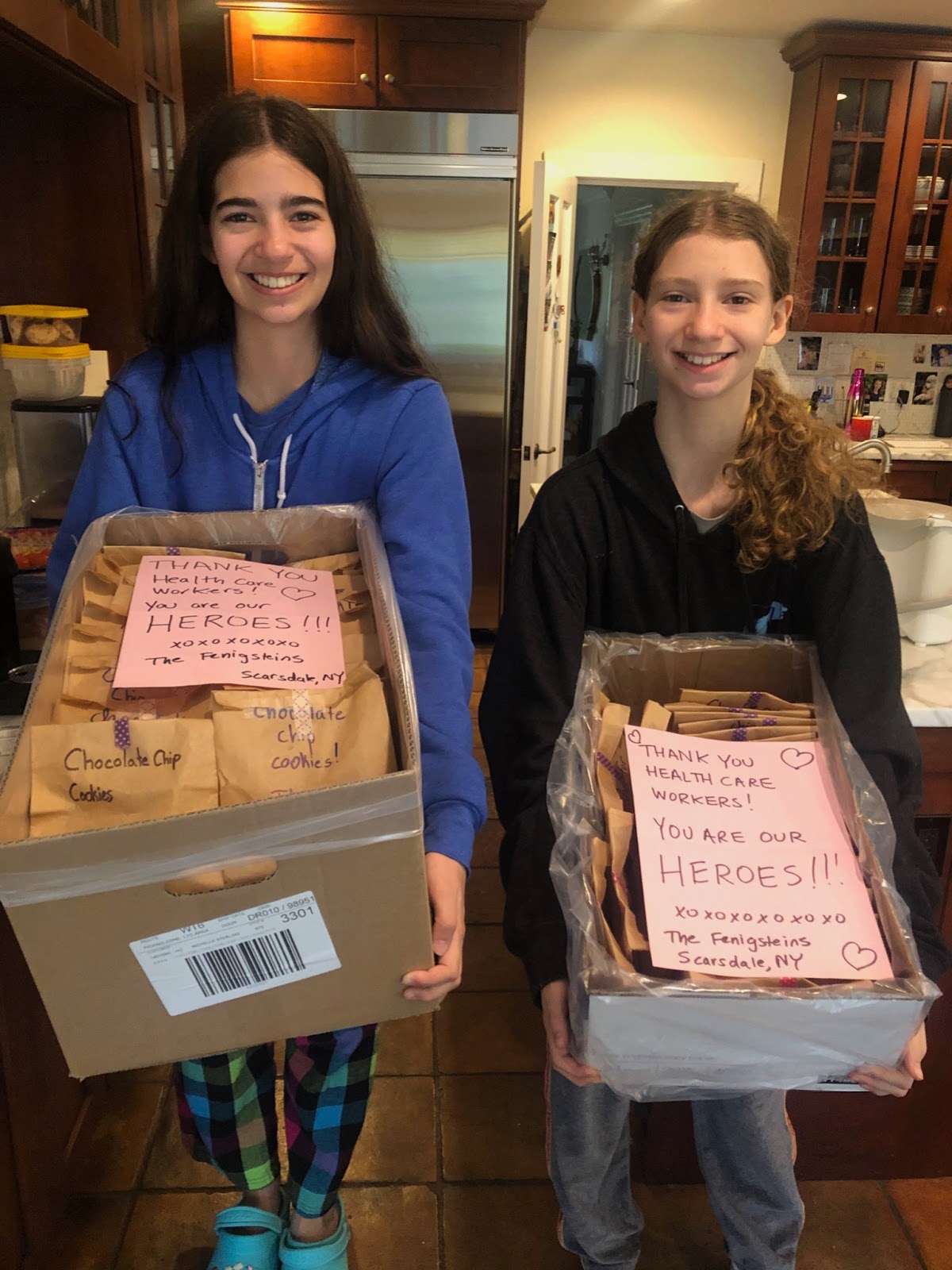 Sammy and Julia Fenigstein, a 9th & 8th grader at Scarsdale High and Middle Schools, baked over 1,000 cookies for the Columbia Presbyterian Hospital Emergency Room Staff.
Sammy and Julia Fenigstein, a 9th & 8th grader at Scarsdale High and Middle Schools, baked over 1,000 cookies for the Columbia Presbyterian Hospital Emergency Room Staff.
Matthew Barotz, a sophomore at Scarsdale High School, prepares food at the soup kitchen at St Bartholomew's Church, which he started as his mitzvah project in 7th grade.
prepares food at the soup kitchen at St Bartholomew's Church, which he started as his mitzvah project in 7th grade.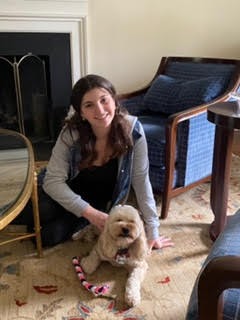 Samantha Medvinsky, a 10th grader at Scarsdale High School, has been making and selling braided dog toys to raise money for Pediatric Cancer Foundation (PCF).
Samantha Medvinsky, a 10th grader at Scarsdale High School, has been making and selling braided dog toys to raise money for Pediatric Cancer Foundation (PCF).
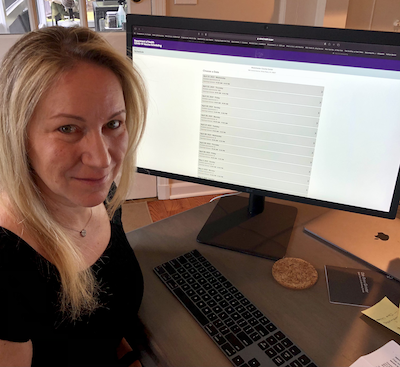
Dr. Carrie Lederman Barotz, a pediatric ophthalmologist, has been helping others make appointments for Covid vaccines since January 2021. “I recognized the stress related to making an appointment and all the unknowns early on, so I learned as much as possible about the process and have made over 100 appointments so far.”
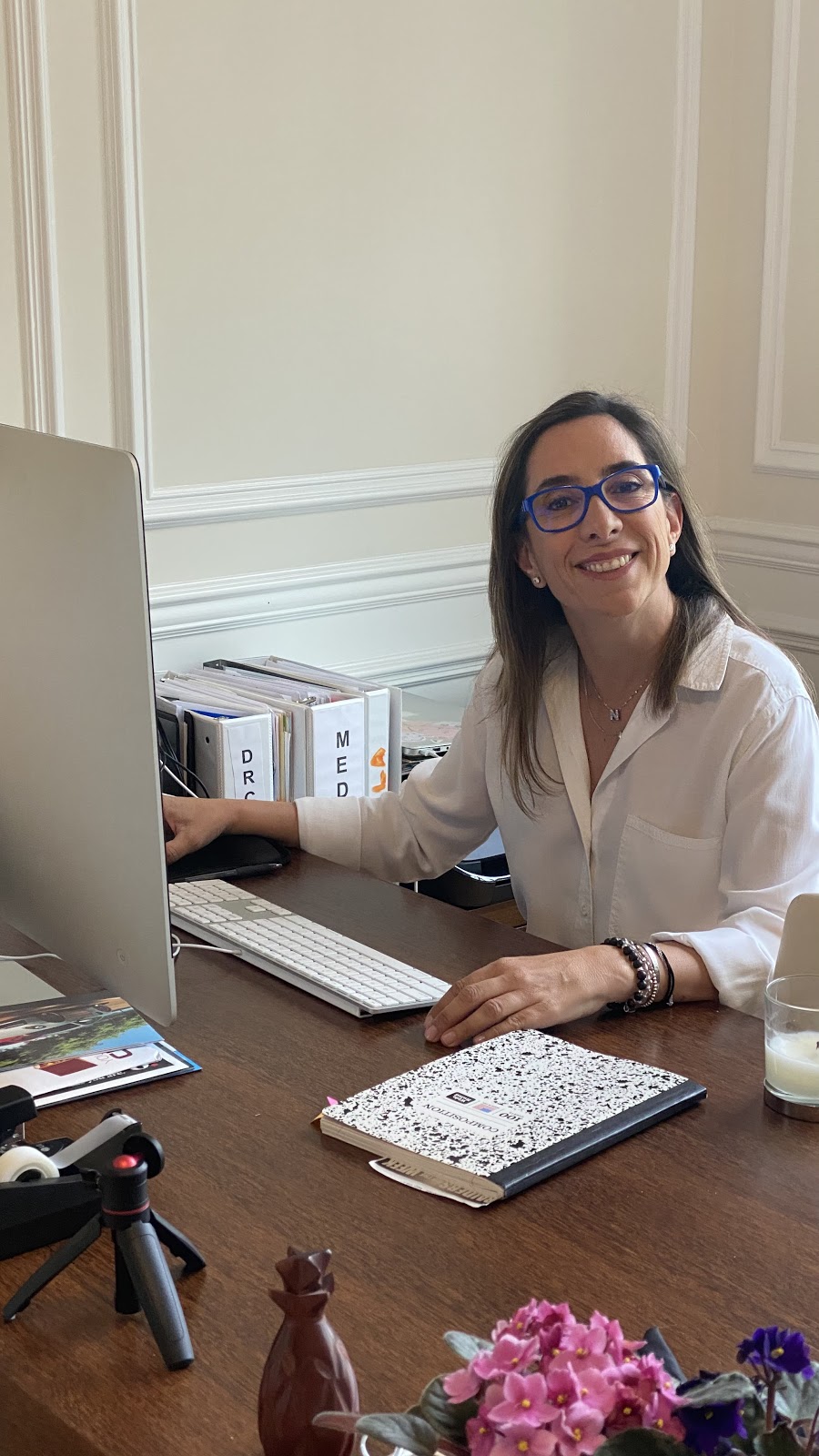 Natalia Alarcon has volunteered as a bilingual consultant for The Acceleration Project since 2019, supporting small business owners who face different challenges and preparing them for recovery and growth. She has created trusted and lasting relationships with them in a wide variety of sectors, from security and construction to child care and hair salons. Natalia also volunteers for K.I.C.K, a non profit organization that spreads awareness about immigrant children and fundraises for the Young Center for Immigrant Children’s Rights. She is also currently helping Nanuu Initiative, an organization in its conception phase, that will support underprivileged immigrant Latina women in the Bronx.
Natalia Alarcon has volunteered as a bilingual consultant for The Acceleration Project since 2019, supporting small business owners who face different challenges and preparing them for recovery and growth. She has created trusted and lasting relationships with them in a wide variety of sectors, from security and construction to child care and hair salons. Natalia also volunteers for K.I.C.K, a non profit organization that spreads awareness about immigrant children and fundraises for the Young Center for Immigrant Children’s Rights. She is also currently helping Nanuu Initiative, an organization in its conception phase, that will support underprivileged immigrant Latina women in the Bronx.
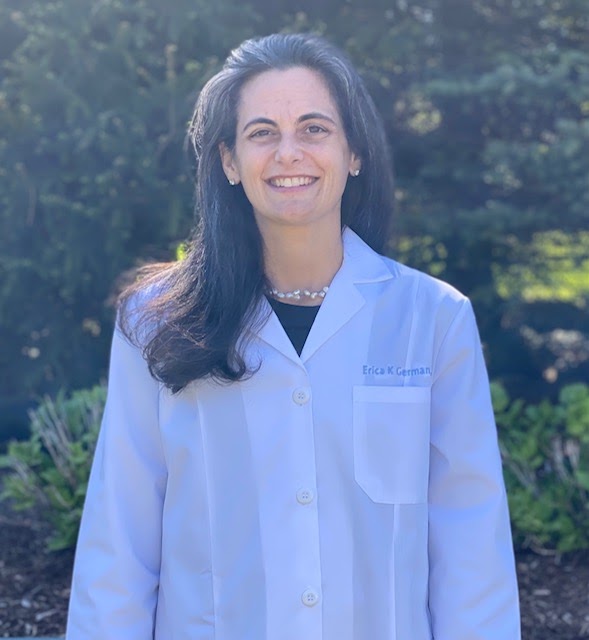
Dr. Erica German "I am a Scarsdale psychiatrist and I have spent 125 hours so far as a volunteer vaccinator at County Center, administering nearly 900 shots. I have also worked with other volunteers to help secure approximately 250 COVID vaccine appointments for Scarsdale schools faculty and staff, Department of Public Works, and town hall staff. At present, I am organizing an outreach initiative to help those who may have language or other barriers make vaccine appointments. As a physician, it's been an honor to vaccinate people directly and also to be able to motivate others to get Westchester vaccinated!" Amy Nadasdi & her daughter, Lydia Doherty, passed in front of the Salvation Army during quarantine in 2020 and saw a line of over 100 people waiting for food that snaked all the way down Post Road towards Scarsdale. They reached out to the Salvation Army to understand the situation and vowed to help. They organized a food drive and Scarsdale responded in a huge way. They brought carloads of food over to the Salvation Army almost daily and helped out on “distribution day” sorting food into boxes, helping to distribute and carry boxes for families, and generally lending a hand where we could. "People chose to help, the kindness and generosity of this community overwhelmed us. We are so proud to live in Scarsdale and call the people of this community our neighbors and friends."
Amy Nadasdi & her daughter, Lydia Doherty, passed in front of the Salvation Army during quarantine in 2020 and saw a line of over 100 people waiting for food that snaked all the way down Post Road towards Scarsdale. They reached out to the Salvation Army to understand the situation and vowed to help. They organized a food drive and Scarsdale responded in a huge way. They brought carloads of food over to the Salvation Army almost daily and helped out on “distribution day” sorting food into boxes, helping to distribute and carry boxes for families, and generally lending a hand where we could. "People chose to help, the kindness and generosity of this community overwhelmed us. We are so proud to live in Scarsdale and call the people of this community our neighbors and friends."
Kiki Hong and Angelene Huang are very active in volunteering and community service,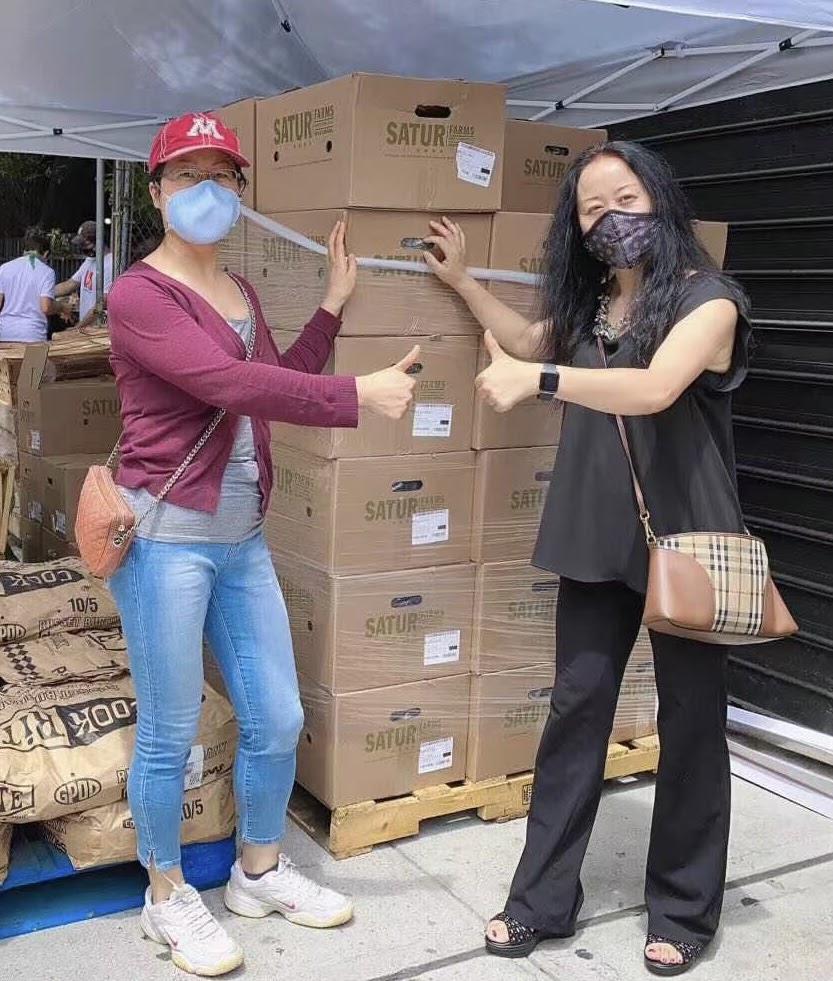 especially during lockdown last year. Kiki donated a large amount of PPE and funds to the Scarsdale Village and local hospitals as well as other communities in need. Angelene was the organizer of the American Chinese United Association ACUA event. She is part of the Chinese American community that donated PPE and funds to Westchester County and NY state. This event was awarded by the NY State Assembly as one of the biggest donors in the state.
especially during lockdown last year. Kiki donated a large amount of PPE and funds to the Scarsdale Village and local hospitals as well as other communities in need. Angelene was the organizer of the American Chinese United Association ACUA event. She is part of the Chinese American community that donated PPE and funds to Westchester County and NY state. This event was awarded by the NY State Assembly as one of the biggest donors in the state.
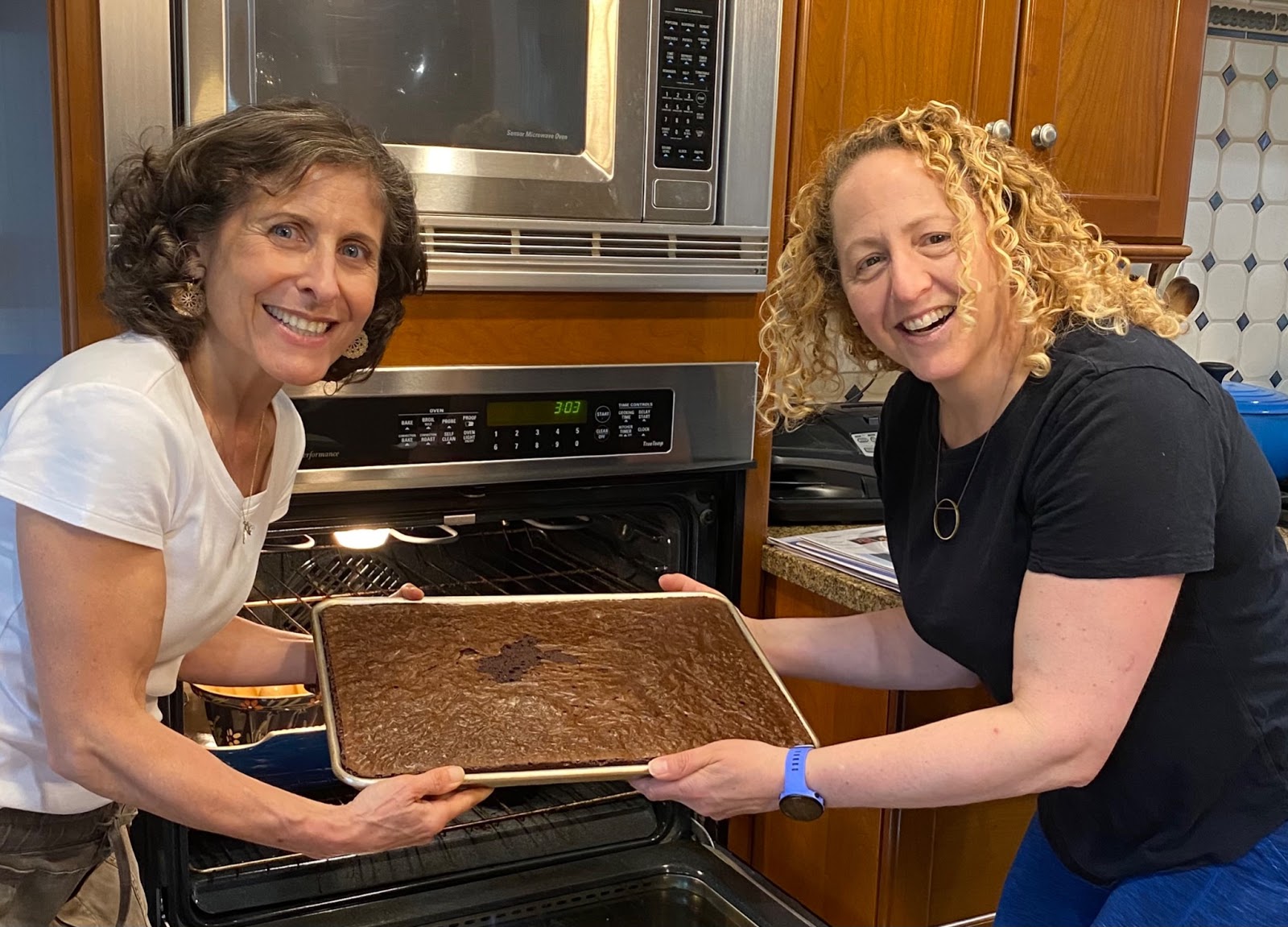 Pam Frankel-Stein & Joan Taback Frankle are members of a team of bakers with Westchester Reform Temple’s weekly Cooking4Hope initiative, and they are also friends to homebound seniors. Since the pandemic raised awareness of, and increased, food insecurity in Westchester County, Pam and Joan, who are good pals themselves, have baked well over 4,000 treats. These sweets accompany the weekly bagged meals donated to neighboring communities and organizations in Westchester, including Hope Community Services in New Rochelle. Pam and Joan also volunteer for @DOROT Westchester, a nonprofit organization whose mission is to address the challenges of an aging population. So many Westchester seniors were isolating to stay healthy as the pandemic changed our world. Pam and Joan made, and continue to make, outreach calls to seniors both through DOROT and through the Caring Volunteer Community of Westchester Reform Temple. “Once we were social distancing at home, we had a lot of time on our hands and it felt so good to put this time to good use, connecting with others over the phone and providing home-baked treats to those who have struggled with food insecurity.”
Pam Frankel-Stein & Joan Taback Frankle are members of a team of bakers with Westchester Reform Temple’s weekly Cooking4Hope initiative, and they are also friends to homebound seniors. Since the pandemic raised awareness of, and increased, food insecurity in Westchester County, Pam and Joan, who are good pals themselves, have baked well over 4,000 treats. These sweets accompany the weekly bagged meals donated to neighboring communities and organizations in Westchester, including Hope Community Services in New Rochelle. Pam and Joan also volunteer for @DOROT Westchester, a nonprofit organization whose mission is to address the challenges of an aging population. So many Westchester seniors were isolating to stay healthy as the pandemic changed our world. Pam and Joan made, and continue to make, outreach calls to seniors both through DOROT and through the Caring Volunteer Community of Westchester Reform Temple. “Once we were social distancing at home, we had a lot of time on our hands and it felt so good to put this time to good use, connecting with others over the phone and providing home-baked treats to those who have struggled with food insecurity.”










